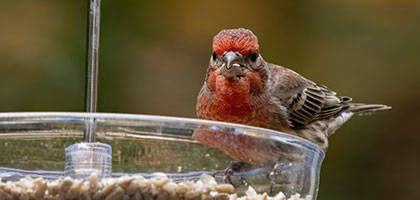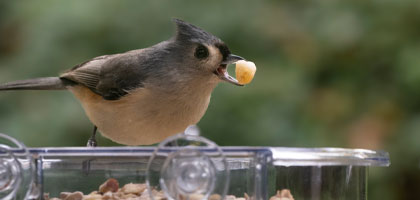Feeding birds in your backyard is an enjoyable way to connect with nature and support local wildlife. Among the many birds you might attract, chickadees are a favorite due to their friendly demeanor and acrobatic antics. But what do chickadees eat, and how can you best provide for them? In this guide, we'll explore the relationship between chickadees and nyjer seed, a popular birdseed choice, and offer tips for successful backyard bird feeding.
Understanding Chickadees
Chickadees are small, lively birds known for their curious nature and distinctive call, which sounds like their name: "chick-a-dee." They are a common sight in North American backyards, often seen flitting about in search of food.
Chickadee Diet
Chickadees have a varied diet that includes insects, seeds, and berries. During the warmer months, they primarily consume insects, which provide the protein necessary for breeding and raising their young. As the weather cools, seeds become a more critical food source.
What is Nyjer Seed?
Nyjer seed, also known as thistle seed, is a small, oil-rich seed harvested from the African yellow daisy. It's a popular choice for bird feeding due to its high nutritional value and appeal to many bird species, particularly finches.
Nutritional Benefits of Nyjer Seed
Nyjer seed is packed with protein and fat, making it an excellent energy source for birds, especially during the colder months when energy needs are higher. Its small size makes it easy for small birds, like chickadees and finches, to eat.
Do Chickadees Eat Nyjer Seed?
Chickadees are not as attracted to nyjer seed as finches are, but they may occasionally sample it if other preferred food sources are unavailable. Chickadees generally prefer larger seeds, such as sunflower seeds, which they can easily hold and open with their strong beaks.
Attracting Chickadees to Your Feeder
If you're eager to attract chickadees to your backyard, consider providing a variety of seeds in addition to nyjer. Black oil sunflower seeds are a chickadee favorite due to their high fat content and easy-to-crack shells. Offering a mix that includes sunflower seeds, peanuts, and suet can cater to chickadees' preferences and increase your chances of attracting these charming birds.
Setting Up a Bird Feeder for Chickadees
To create an inviting space for chickadees and other birds, it's essential to choose the right feeder and location.
Choosing the Right Feeder
Chickadees are agile and can use a variety of feeders, but they prefer ones that provide easy access to seeds. Tube feeders with perches near the feeding ports work well, as do hopper feeders that allow chickadees to hop around comfortably. Make sure the feeder has small openings to prevent larger birds from dominating the food supply.
Ideal Feeder Location
Place your feeder in a quiet area of your yard, ideally near trees or shrubs that provide cover and perching spots. Chickadees are cautious birds that appreciate having nearby shelter to retreat to if they sense danger. Position the feeder at least five feet off the ground to protect against ground predators.
Maintaining Your Bird Feeder
Regular maintenance of your bird feeder is crucial to keep it clean and safe for visiting birds.
Cleaning and Refilling
Clean your feeder every two weeks or more frequently during wet weather to prevent mold and bacteria buildup. Use a mild soap solution and rinse thoroughly. When refilling, ensure the seed is fresh and dry. Discard any wet or moldy seed, as it can be harmful to birds.
Preventing Pests
Keep an eye out for unwanted visitors like squirrels and raccoons, which can empty your feeder quickly. Baffles and squirrel-proof feeders can help deter these critters. Also, regularly check the area under the feeder for seed spillage, which can attract rodents.
Additional Tips for Successful Bird Feeding
While feeding birds is a rewarding activity, there are a few additional considerations to ensure a positive experience for both you and the birds.
Providing Water
Birds need water for drinking and bathing, so consider adding a birdbath to your yard. Ensure the water is clean and not frozen during winter months. A heated birdbath can be a great addition in colder climates.
Seasonal Feeding
Adjust your feeding strategy with the seasons. In winter, provide high-energy foods like suet and sunflower seeds to help birds maintain body heat. In spring and summer, a mix of seeds and fruits can attract a broader range of species.
Observing Bird Behavior
Take the time to watch and learn from your feathered visitors. Each species has unique behaviors and preferences, and observing them can enhance your bird feeding experience.
Conclusion
Feeding chickadees and other birds in your backyard can be a delightful and educational hobby. While chickadees may not be the biggest fans of nyjer seed, offering a diverse selection of seeds and maintaining a clean, safe feeder environment will encourage them to visit. By understanding the dietary preferences of chickadees and providing for their needs, you can enjoy the company of these charming birds throughout the year.
With the right setup and care, your backyard can become a haven for chickadees and many other bird species, bringing the joy of nature right to your doorstep.






